The 747 Jumbo Jet is an iconic aircraft. For years, it was the only double-deck commercial airliner and for many it is a favorite. From its first flight in 1969, the 747 has changed quite a bit. The newest iteration, the 747-8, might sport a similar shape to the original 747 or the 747-400, but it is quite a different beast (more than just LED lighting). This past weekend, the 1,500th 747 was delivered to Lufthansa Airlines. About a week earlier, Boeing took the opportunity to talk about their largest commercial airliner and its future relevance.
I was invited to Boeing’s factory in Everett to sit down with Eric Lindblad, vice president and general manager of the 747 program, and we had a down-to-earth conversation about where the 747 has been, where it is today, and where Boeing is hoping it is going.
The big message that Lindblad wanted to get across is, “this is not your mother’s 747.” Not only is the 747-8I a very different aircraft than the 747-400, but the 70th 747-8 is much more efficient than the first one, and they plan to keep making it more efficient.
The aircraft has been doing very well while in service with eight different operators. The 747-8 has flown over 385,000 flight hours and have served 150 different airports. The 747-8 has a dispatch reliability rate of 98.9%, which is exactly where Boeing was hoping it would be.
BONUS: Inside the Factory: Photo Tour of Where Boeing 747s are Born
Boeing has improved the operating costs of the 747-8 3.5% since the introduction of the first aircraft. The number might seem small, but it adds up to big money. A 3.5% improvement is a savings of about $1.94 million dollars per year per aircraft. The 747-8 is 16% more fuel efficient than the 747-400 – that’s $8.8 million per aircraft per year savings.
They have done this by implementing the Performance Improvement Package (PIP) engine upgrade, aerodynamic improvements, activating the additional tail fuel tank, and reducing the weight by 7,200 pounds.
Many (including even us) have questioned the continuing viability of the 747. Without many orders in the books, can the 747 line survive the long-term? Boeing needs to get additional customers to ensure the survivability of the aircraft.
Although Boeing would not directly state they have some customers on the line, it was strongly hinted that we might be hearing about a potential new customer or two in the upcoming months.
One example of future operations they gave was wanting the 747-8I to be able to take off, fully loaded, any time of the year (even in a hot environment) and fly 8,200 miles. Lindblad stated that this could make the aircraft fly routes like Hong Kong to New York and Los Angeles to Dubai. It was interesting to me that he used Dubai as an example.
There are three viable candidates in the Dubai area who could possibly take on the 747-8 Intercontinental: Qatar, Emirates, and Etihad.
Although I’ve had the CEO of Emirates, Tim Clark, tell me directly that they have absolutely no interest in the aircraft, the airline is growing like gangbusters and wants large aircraft quickly. They have 92 Airbus A380s and 150 777Xs on order, and it will take a long while to get all those in service. The Boeing 747-8I is sitting without a long backlog and could enter service much quicker. Do the adamant “no’s” really mean no – or a negotiation strategy?
Qatar and Etihad are also two airlines that are growing very quickly and are looking to expand their fleet with large aircraft; both have 10 Airbus A380s on order. As with Emirates, they are looking to provide a high-end product to a high number of passengers.
BONUS: Does the Boeing 747 Have a Future?
All three middle east carriers have been competing for the biggest and best products. Etihad recently unveiled an apartment-style first class product, and those sorts of large first class products are only viable in large aircraft like the A380 and 747-8. The Boeing 747-8 allows airlines to provide more premium product (first, business) options than the smaller 777 or A340/A330.
Farnborough is coming up next month, and when I asked Lindblad if we should expect a 747 announcement, he was not able to say. I would hope either during the airshow or shortly thereafter, Boeing is able to announce at least one additional customer for the plane. At the very least, hopefully the 747-8 will be the basis for the next-generation Air Force One, allowing the signature airframe to represent the U.S. to the world.
Boeing is confident that the 747 will be built for quite a bit longer, and they are optimistic that they have campaigns that will result in additional sales of the aircraft – I surely hope that is true. As an AvGeek, I love the majestic look of the 747, and who wouldn’t enjoy riding in the upper deck or the nose of the jumbo jet? But warm and fuzzy feelings don’t sell aircraft – the numbers do. And as Boeing is able to improve the numbers of the 747-8, it might open up the door to potential customers.
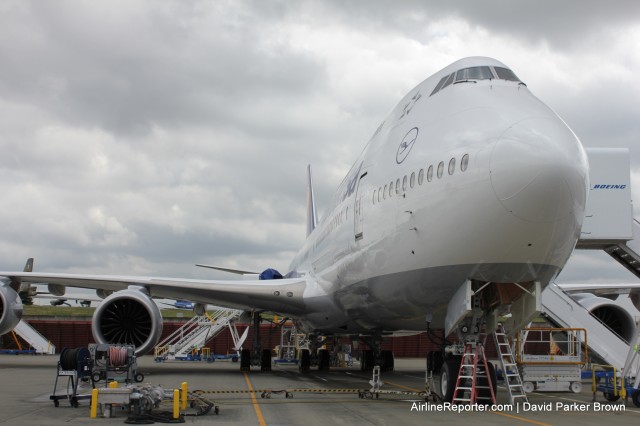
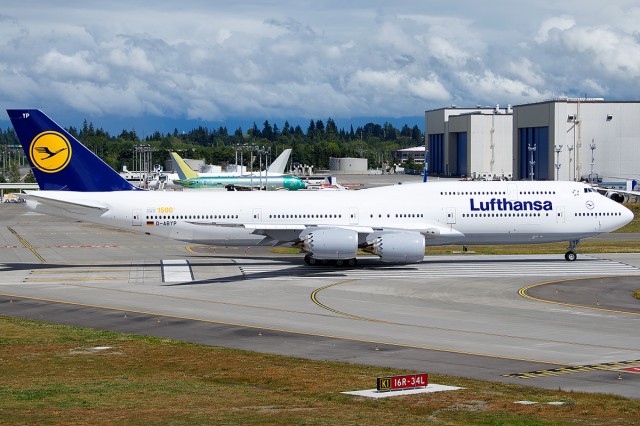
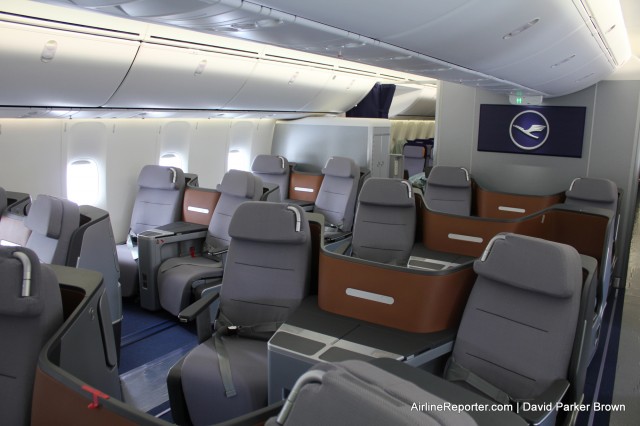
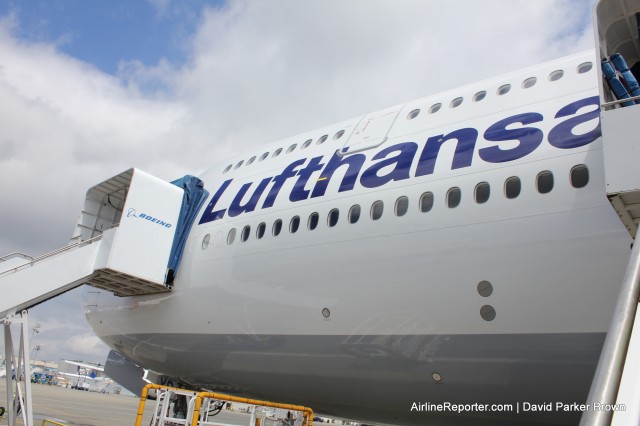
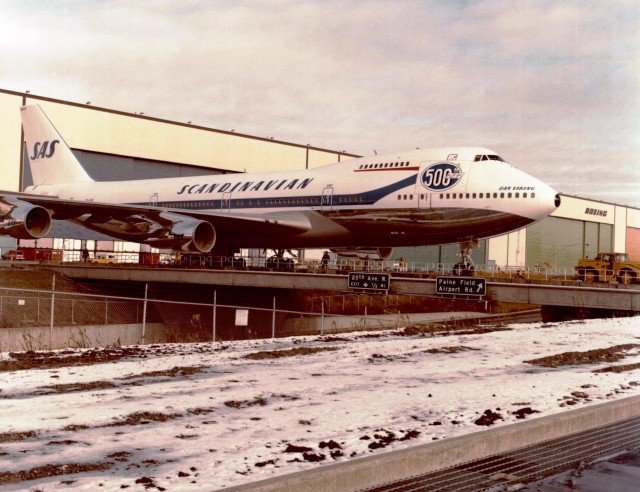
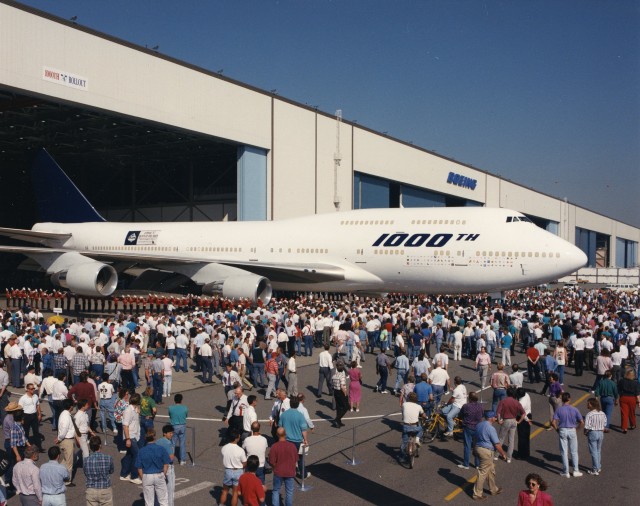
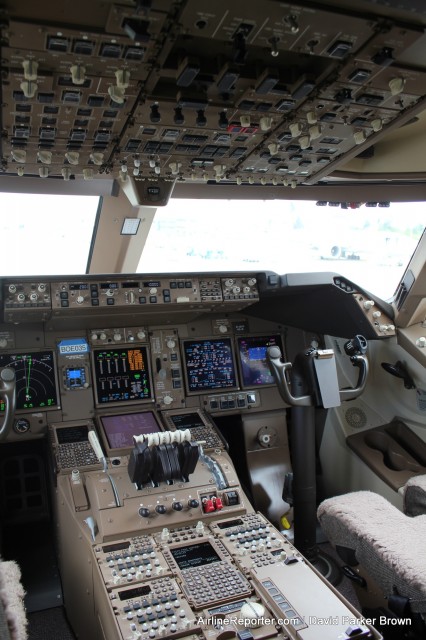
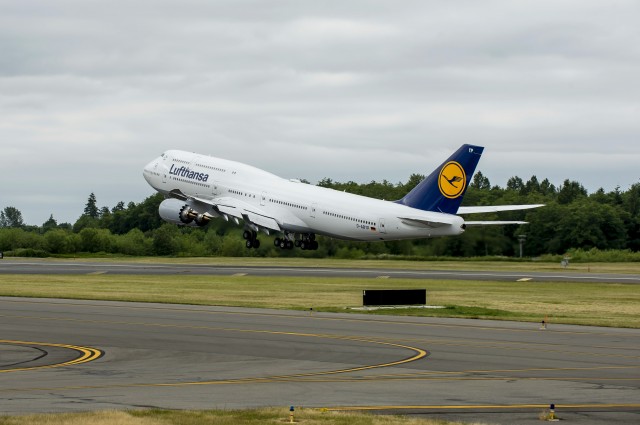
I believe it will be around long after A380 is history.
Really hope more airlines decide to order. I would like to see a US carrier take delivery of this plane (United, Delta, American).
Even if the sun is setting on the 747 program there is one thing that cannot be denied, she will forever be Queen of the Sky. She revolutionized the jet age, made it possible to connect people on the other side of the globe in hours, not days. While the A380 is indeed an impressive bird in a category all it’s own, it will never have the success that the 747 did. I just hope Boeing will let it go gracefully and not build them to store them.
Do you have any pictures of the first class cabin or the upper deck?
I’d love to see a full cabin view of the upper deck to see how spacious/or not spacious it is.
Hello MSP,
You can find many more photos here: https://www.flickr.com/photos/airlinereporter/sets/72157630008290790/
David
It is not/never has been about the quality of the 747-8. The issue is operating cost per seat mile, meaning **filled** seats. The Gulf Carriers seem to believe that they have the demand for more A380s and they are also buying 773s and some 777Xs in mass. For carriers that already operate both the A380 and the B777 (in all types), the wonderful B747-8 is kind of a ‘slop factor’ in the middle. If nothing else, those carriers can swap 777s for 380s seasonally, depending upon projected loads. Adding yet another, large capacity type to the mix is extremely expensive: Wholly new maintenance procedures and training, a dedicated group of pilots (Four-five complete flight crews per airplane) and no certain place for them in their announced route structures. Obviously, this is a difficult choice!!
Most reviewers highlight Business Class and what little genuine First Class remains; those are the gravy (profit) seats for most airlines. Even on long haul flights of 10+ hours, the bread and butter basic operating expenses are paid by the cattle-class coach passengers. I have flown coach in both the A380 and the B747-8. They are different! In my experience, the 747-8I is more comfortable *in the seat*, but the A380 is more welcoming for a very long flight. A coin toss in my view.
So here is what I think: The Boeing 747-8I will sell a few more 8Is, save a pair of new VC-25s (VC-26?) and a few more freighters. By the end of the decade, that wonderful history will become toast. The A380 will sell quite a few more airframes, but never come close to even 500. The A380’s only real advantage is that it can accommodate a lot more cattle class seats than can the B747-8. Let’s face it: a lot of passengers will tolerate a lot of discomfort for an inexpensive fare. The cost per seat mile (cheek mile/2?) is better on a full A380 than on a full B747-8. If there is a saving grace for the B747-8, it is the -F freighter. Some of the new ones are going directly into storage today, but the frames and the basic model already exist. Last I heard, Airbus had no plans to build an A380-F. It would cost them a fortune to design one and Boeing already ‘owns’ the large freighter market. When Boeing gets to the end of the 747 assembly line, probably at the end of this decade, they will still command the large freighter market, they will probably build and store a few ‘extra’ airframes and close the line. Airbus will never build an A380-F, but 25+ years from now, someone may try to convert one. (It will be too expensive.)
Sadly, David, the majority or what you have reported is little more that rip and paraphrase from well known sources and little of your own thoughts. When the sentences are your own, you really should circulate them through your staff (perhaps even Mom?) before hitting the ‘GO’ button. Your writing seems to be a bit better, but sorry, still not good enough for a professional blog. (This CAN be fixed, but it will require some serious effort on your part. If AR is to achieve genuine professional status in this field, the host’s writing (vocabulary?) must improve. You may disclaim the title, ‘Journalist,’ but you practice the art. You CAN improve your published remarks by learning about writing and/or having your work reviewed by your ‘staff,’ before it is published. Sorry, but it is still clunky. You *must* already know that if the original writing was much better, you and AR would get far more invitations to test, evaluate and report on a variety of subjects. Who wants to host a ‘reporter’ that cannot properly describe the hard and soft services that he has experienced? You have made changes before. You have the readership. It can go up or down, dependent mostly upon the quality of the writing. I’m always with you, but you CAN do better. -C.
I can agree with your first two paragraphs — your third, not so much.
David
That’s perfectly OK – and the way the world turns. Best wishes… -C.
Nice Article David, Love the pictures.
Thanks Charlie!
David
Great article David! I personally think your writing is great! (lol) I wonder why people have to come onto peoples sites and critique the writer. Have a great day, Ben
As an Israeli, I’m pretty sure ElAl will order around 5 747-8I in the near future. With slots available in the near future, why would an airline commit to buying a plane well in advance?
While the A380 probably didn’t have economic justification for development, it did bury the 747 in the gap between 777 and A380. Smaller airlines like ElAl who operate from an airport not suited for A380 and long standing relationship with boeing will order te 747. But for bigger airlines, I thing it is game-over.
The 747 will always be my favorite and the undisputed king of the skies. Loved the article and I wish the 747-8 program similar success to its predecessors. Hopefully, someday down the road, we’ll be reading about #2000!
The airlines have voted with there wallets and the 747 is a dead duck. The new of skies is the 777 cheaper to operate. The 747 will only stay in production till the VC25 replacement is ordered. Boeing only produce 1.5 aircraft per month and they take 3 months to build to one they couldn’t build them any slower.
would love to see an upgraded, fuel efficient, modern version of the Lockheed L-1011 TriStar…….flew on both 747 & L-1011 (interline british airways & cathay pacific) in the jump seat into Hong Kong Kai Tak Airport with the checker board hard bank-those were the days.
From an airliner point of view, the B777s are ok aircrafts with somewhat lower operational cost as compare to B744s but not by much. From a passenger point of view, the cabin seat/space is smaller, it is also much slower than B744 in cruse and rattles more when in turbulence due to lighter weight built-material used, almost like the composite cabin feel of an airbus 3XXs. So in my opinion, given a long haul sector say from HKG to LAX flight in winter flying of 15-16 hours, by utilizing B777s the passengers get cramped in their smaller space/seats about 1 hour+ longer whilst the B744s carried more passengers with greater space and stays off the air 1 hour less. Also not to mention the benefit and psychological insurance of having 4 engines instead of 2 over vast pacific ocean. In the long run, passengers still want to get to their destination Faster, More Comfortable and Safer with proven track records. And only B744s had so far meet this consumer requirement.
I am absolutely with Mr. George on the 747 and how it is more comfy, more spacious, faster and 4 engines are safer than 2. My thoughts exactly. What will it take to earn the business of so many airliners (especially those who flew or still fly 747-400) and be able to build and sell the new 747-8I (passenger and even combi, which is still viable)? This is the side that many are NOT seeing. I understand about op. costs and less fuel with 777, which are nice planes, but the 747 IS THE GOD OF ALL JETS!!! Boeing should seriously make a real pitch to create major appeal in order to attract many, many more new customers as 4 engines are safer than 2 because think about it: 747 has 4 engines and if one goes out, the other 3 will still carry on the 747 long-haul, but with 777’s 2 engines, if one goes out, then the other engine carrying on is a huge flight risk, which would leave the passengers screwed. You absolutely do NOT want that happening! Boeing makes the best planes, but it really should keep the iconic 747-8I program because it is still viable with low fuel costs.